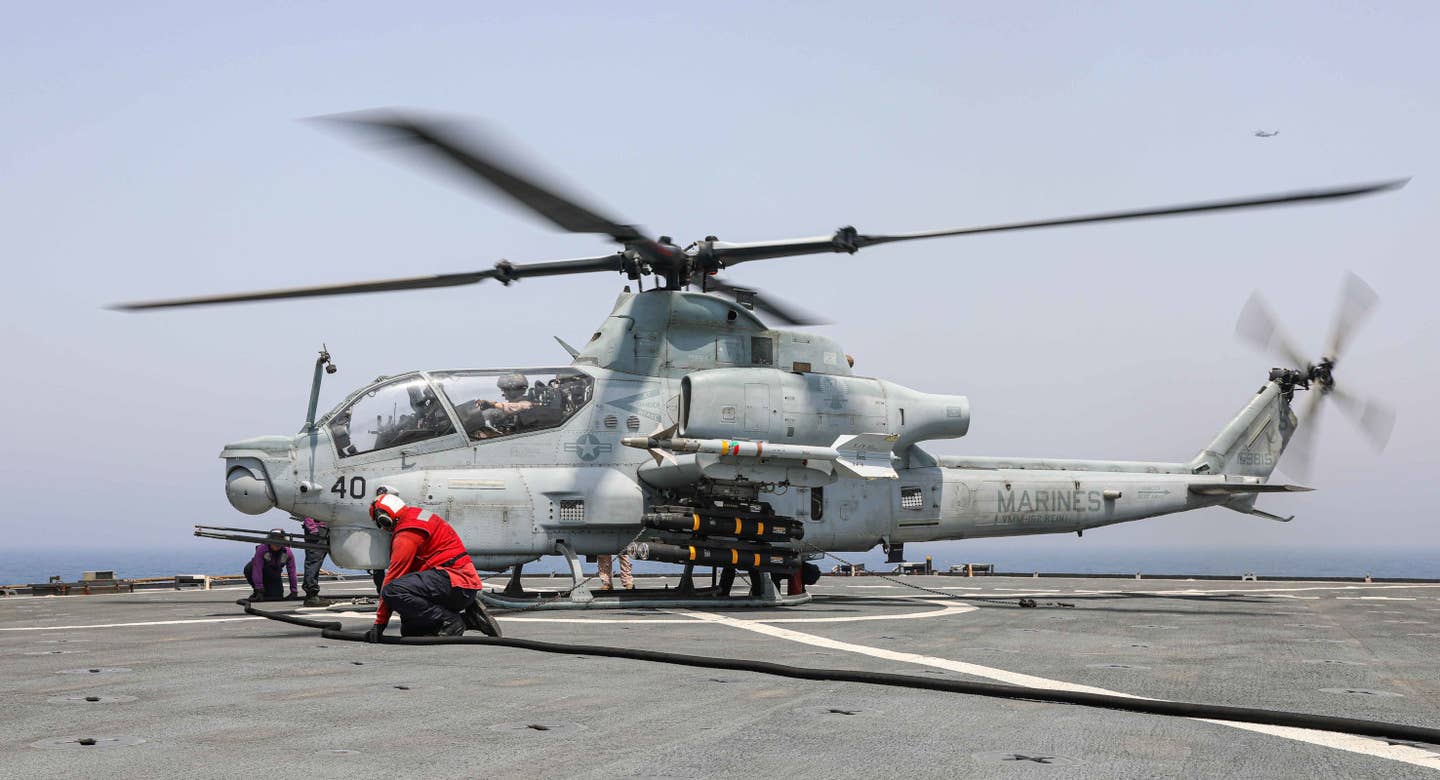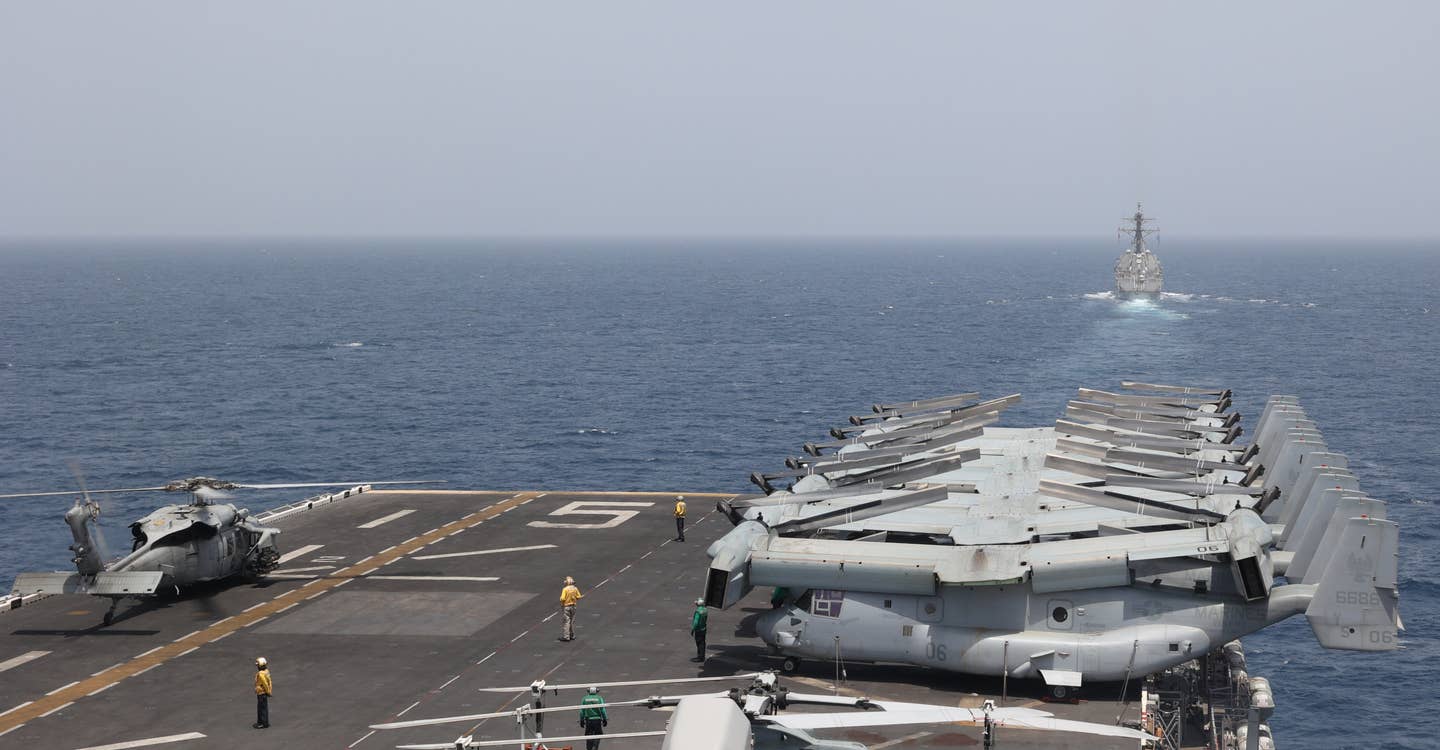A US attack helicopter on a routine flying operation in international airspace was repeatedly targeted by laser beams from Iran’s Islamic Revolutionary Guard Corps Navy vessels, causing worry in the Gulf.
The AH-1Z Viper is from a military unit and is deployed aboard the USS Bataan amphibious assault ship.
In a statement, the US Naval Forces Central Command Spokesman, Cmdr. Rick Chernitzer said,” (The) IRGCN vessels beamed a laser at the aircraft multiple times while it was in flight.”
The incident occurred on September 27 at 7:30 p.m. local time.
The statement clarified that no one aboard was injured, and the helicopter sustained no damage. The incident occurred in international airspace, and Iran’s actions were inappropriate.

“These are not the actions of a professional maritime force,” said Cmdr. Rick Chernitzer, a spokesperson for US Naval Forces Central Command. “This unsafe, unprofessional, and irresponsible behavior by the Iranian Revolutionary Guard Corps Navy risks the US’ and partner nation’s lives and needs to cease immediately.”
Chernitzer emphasized that the naval forces will maintain their vigil and continue operations within the bounds of international law, affirming their commitment to flying, sailing, and operating in areas permitted by international law to promote regional maritime security.
The Wasp-class amphibious assault ship, USS Bataan, is deployed to the region to deter Tehran’s seizure of commercial tanker ships.
In August, Iran released footage of the Iranian navy dispatching small vessels to confront the USS Bataan in the tense Strait of Hormuz.
During that incident, Iran’s Islamic Revolutionary Guard Corps threatened to open fire on US Marine Corps and Navy helicopters, providing cover for a convoy of American warships passing through the volatile Strait of Hormuz.
US officials disputed the Iranian military’s claims and said all reports of a US asset being intercepted or compelled to land were inaccurate.
The new incident marks another episode in the escalating tensions between the two military forces operating in the Gulf region.
Growing Tensions Between Iran And US
The Iran Guard Corps, known for its hardline stance and direct allegiance to the country’s supreme leader, was previously designated as a terrorist group during the Trump administration.
It has engaged in a troubling pattern of harassment, attacks, and seizures of internationally flagged commercial ships as they navigate through the Middle East waters.
These actions, consistently condemned by the US Navy as a grave menace to maritime security, prompted the Pentagon to take decisive measures.
To counteract this behavior and enhance regional security, the Pentagon deployed a range of fighter jets and warships, bolstering the military presence in the area.
In July, the Pentagon’s deputy press secretary, Sabrina Singh, announced that in reaction to a series of concerning incidents in the Strait of Hormuz, the Secretary of Defense directed the deployment of USS Thomas Hudner destroyer, along with F-35 and F-16 fighter aircraft, to the US Central Command’s area of responsibility.
These deployments aim to protect US interests and ensure the unhindered freedom of navigation in the region. In June, for the first time, the United States Air Force also sent advanced F-22 stealth fighters to Qatar to enhance its military presence in the Middle East.

The recent targeting of the helicopter by a laser comes close on the heels of five American hostages’ release and return to the United States earlier this month.
As part of the deal, the Biden administration authorized the transfer of US$ 6 billion in Iranian funds frozen in a Qatari bank. However, this decision received criticism from certain quarters.
House Foreign Affairs Committee Chairman Michael McCaul (R-Texas) expressed his strong desire to bring these American hostages home but emphasized the importance of approaching the situation with a clear understanding of the implications.
He voiced concerns that the US$ 6 billion injection into Iran’s financial system could bolster their proxy warfare, support terrorist activities, and advance their nuclear ambitions.
President Biden also cautioned Americans contemplating travel to Iran in light of the hostages’ return. He pointed to the US State Department’s long-standing travel advisory, which explicitly advises against visiting Iran due to the risks of kidnapping, arbitrary arrests, and detention of US citizens.
- Contact the author at ashishmichel(at)gmail.com
- Follow EurAsian Times on Google News




